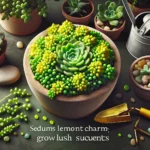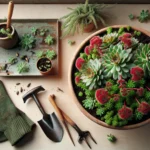Introduction to Lemon Coral Sedum
Discover the unique characteristics of the Lemon Coral Sedum, a highly sought-after succulent for modern gardens.
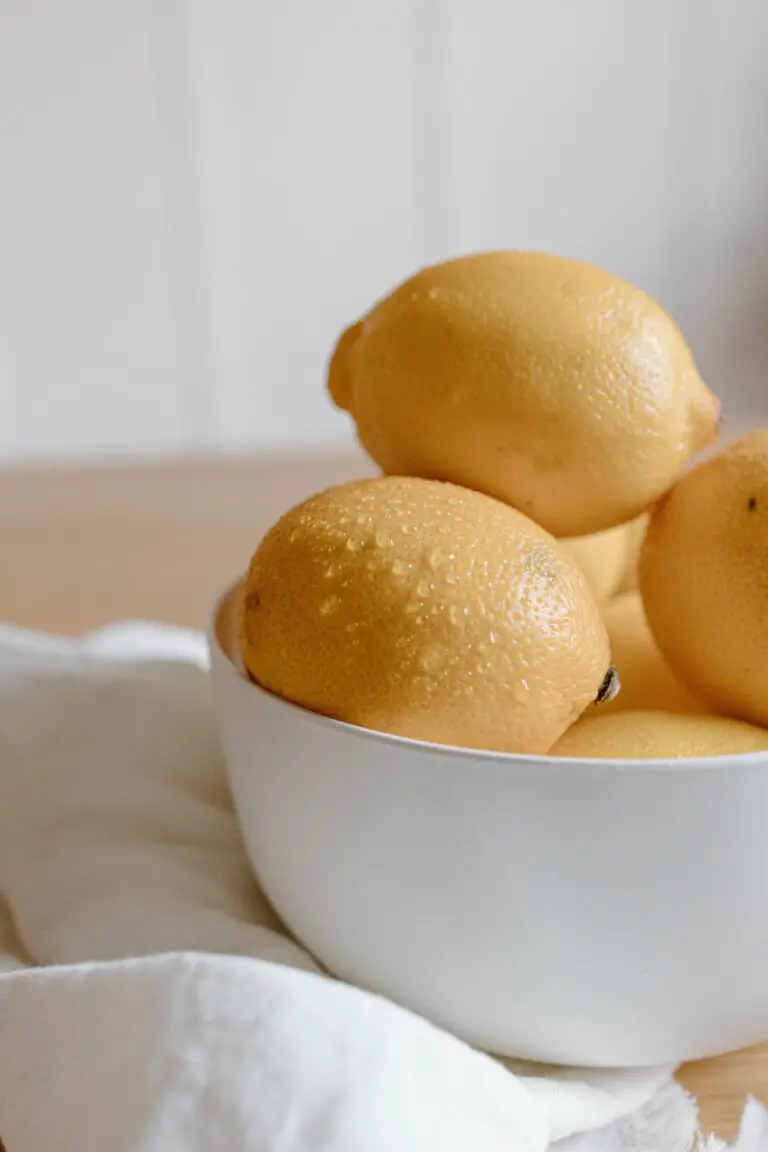
This succulent is a visual feast for the eyes with its vivacious chartreuse leaves that sparkle brightly under the sunlight. Easy to care for and hardy in nature, Lemon Coral Sedum is a favorite among green thumbs for its adaptability and the flamboyant texture it lends to any outdoor space or container garden. Whether used as a complementary piece alongside brighter flowers or as a standalone feature in a minimalist aesthetic, its versatility is unmatched.
Envision a swath of Lemon Coral Sedum, cascading down a rocky incline or nestled within the crevices of a stone path, each plant meshing together to create a lush tapestry of succulent splendor. These ground-covering marvels thrive in diverse environments, from the intense summer heat to the chilly days of fall. For more insights on the wonders of succulents and how to incorporate them into your garden, consider exploring our deep dive into various succulent types.
Origin and Botanical Profile
Let’s dive into the fascinating world of the Lemon Coral Sedum, a succulent that’s stealing the spotlight in gardens and home decor. With its origins tracing back to the cradle of rich biodiversity, this plant has established itself as a jewel among the Sedum species. Imagine a groundcover that not only thrives with minimal fuss but also adds a splash of electric lime to your living space!
Historical Roots and Taxonomic Ties
The lineage of Lemon Coral Sedum is as intriguing as its vibrant foliage. Found in various regions that span different continents, its adaptability is a testament to nature’s ingenuity. As a member of the Sedum family, known scientifically as Sedum mexicanum, it shares the stage with over 400 siblings, each boasting unique features and resilience.
The botanical family tree of this succulent points to its kinship with other stonecrops, often characterized by their hardy nature and drought-resistant talents. Garden enthusiasts like you revel in the ability of these plants to transform landscapes into year-round tapestries of color and texture.
Did you know that a well-cared for Sedum can not only brighten your garden but also serve as an indicator of your green thumb’s prowess? It’s true; these succulents are barometers of plant care success!
From Mountain Tops to Urban Pots
The Lemon Coral Sedum is no stranger to rocky outcrops and alpine slopes. Yet, it has effortlessly transitioned to urban settings, where its low maintenance and eye-catching appearance have made it a popular choice. Even in apartments and office desks, where concrete replaces natural habitats, this succulent thrives, bringing a piece of the wild into our daily lives.
Experience the joy of watching this succulent flourish; its tenacity to persist in diverse environments is almost inspiring. Whether you’re a seasoned gardener or just beginning to dabble in the world of succulents, the Lemon Coral Sedum is a surefire way to add zest to your horticultural endeavors.
For those looking to delve deeper into the care specifics of this radiant succulent, here’s a valuable visual guide:
Why Choose Lemon Coral Sedum for Your Garden
When it comes to adding a splash of year-round color to your garden, Lemon Coral Sedum is a champion. Its electrifying lime green foliage doesn’t just stand out; it sings in harmony with your floral ensemble. So, why exactly should you roll out the green carpet for this vivacious succulent? Let’s dig into the roots of its popularity!
First off, this plant is tough as nails. It’s not just drought-tolerant; it’s a real survivor, taking on heat and humidity like a champ. Whether you’re nestled in the crisp northern states or basking in the southern sun, Lemon Coral Sedum stays lush with minimal fuss. And when Jack Frost comes a-knocking, this plant holds its own, making it a fantastic perennial for a wide range of zones.
But hardiness is just the tip of the iceberg. This succulent adapts like a chameleon – tuck it into rocky crevices, let it cascade over walls, or use it as a vibrant groundcover – it’s like the Swiss Army knife in your gardening toolbox. And when those summer blooms start to fade, Lemon Coral Sedum keeps the show going, refusing to let the garden party stop.
One of the most endearing qualities of Lemon Coral Sedum is how well it plays with others. Picture this – a sea of Purple Heart wandering jew or a cluster of Turtle Vine softened by the cheerful Lemon Coral. Need more ideas? Check out this delightful video showcasing how to pair plants with your Lemon Coral Sedum for stunning effects:
Envision your borders, containers, and even indoor spaces coming to life with this succulent’s glowing presence. It’s not just a plant, it’s a statement – one that says, “My garden rocks all seasons with panache!” So why not give Lemon Coral Sedum the spotlight it deserves? With its low maintenance and high impact, it’s a gardener’s dream, brightening gardens with every leaf.
Optimal Growing Conditions and Climate for Lemon Coral Sedum
Imagine a swath of vibrant green-yellow foliage cascading over your garden wall, brimming with the zest of a thousand suns – that’s Lemon Coral Sedum for you. This succulent gem thrives when the conditions are just right, and believe it or not, it’s not a fussy plant. Let’s delve into the world where these radiant beauties flourish.
Sunlight: A Sunny Disposition
Like a sunbather luxuriating on a Mediterranean beach, Lemon Coral Sedum adores the sunshine. It needs at least six hours of sunlight per day to maintain its vivid coloration and compact form. In fact, these succulents are so smitten with the sun that, without it, they may stretch out and lose their iconic dense texture. So, plant them where they can bask in the glory of the day’s light, and they’ll reward you with a stunning display.
Temperature: Warmth is the Key
Warmth is next on the checklist. Lemon Coral Sedum is like your friend who always wears shorts — it loves warmth and tolerates heat well. However, it’s not quite ready for an Alaskan winter. This hardy succulent prefers temperatures that don’t dip below 30°F (-1°C). Luckily, it’s resilient and can spring back from cool snaps, but it’s happiest when it’s warm.
Soil Requirements: The Right Foundation
Next up is the foundation—soil. Think of it as the succulent’s cozy bed: it craves well-draining soil that doesn’t hold water like a sponge. You see, Lemon Coral Sedum has a strong dislike for wet feet; prolonged soggy conditions could spell doom. So opt for a mix that’s akin to a fluffy down comforter — one that’s rich enough to support growth but drains quicker than a colander.
If you’re now picturing your Lemon Coral Sedum thriving in your garden, basking in sunlight, and enjoying just the right amount of warmth and drainage, then you’re on the right track to succulent success. But don’t take my word for it; let’s dive into an illuminating visual guide that will solidify your knowledge about caring for these radiant plants.
${video_embed_code}
With these insights, you’ll be well on your way to cultivating a lively Lemon Coral Sedum display that’s as bright and cheerful as a slice of lemon meringue pie on a summer’s day. Now, go forth and let these succulent superstars light up your garden with their zesty splendor!
Planting and Cultivation Best Practices
Are you ready to invigorate your garden with a burst of citrusy charm? The Lemon Coral Sedum is your go-to plant for a splash of vibrant greenery that’s as hardy as it is beautiful. But how do you ensure your succulents thrive and turn heads in the neighborhood? Let’s dive into the nitty-gritty of planting and nurturing your Lemon Coral Sedum.
Choosing the Perfect Spot
First things first—location, location, location. These succulents love the sun, but they’re not sunbathers. Aim for a place where they can soak up around six hours of sunlight, but where they can also catch some afternoon shade—think of it as sunscreen for your sedum.
Plating Depth and Spacing: The Secret Sauce
When planting Lemon Coral Sedum, think of the ‘one-two punch’—depth and spacing. You’ll want to tuck them into the soil just deep enough that the roots feel snug, not suffocated. A hole about as deep as the root ball should do the trick. As for spacing, envision little succulent islands spread about 6 to 12 inches apart, where each plant has its own spotlight to shine.
Soil Savvy
A Lemon Coral Sedum isn’t fussy—it’s the laid-back member of the plant world. It prefers well-drained soil, much like a sandy beach after the tide has gone out. If your garden has heavy, compact soil, simply amend it with some gritty material like coarse sand or perlite. It’s like giving your plants breathable workout clothes for ultimate growth and comfort.
Here’s a visual treat for you—a step-by-step guide to ensure your Lemon Coral Sedum looks as fabulous as it’s supposed to:
Water Wisdom
When it comes to watering, these succulents don’t need a daily drink. Wait until the soil dries out between watering, then give them a good gulp. Overwatering is like giving them a bath when they just need a quick shower—it’s well-intentioned but does more harm than good. Remember, these plants are the camels of the garden, storing water in their fleshy leaves for the dry spells.
Aeral Synchronization
Surprisingly, the air around your plants is as important as the soil underneath them. Good airflow helps prevent diseases and keeps pests from turning your sedum into a snack bar. So set your Lemon Coral Sedum where the breeze can dance through their leaves—think of it as their personal air conditioning on a hot day.
With these bits of wisdom, you’re well on your way to having not just living plants, but thriving natural masterpieces. Your garden will soon be a vivid testament to your green thumb, with the Lemon Coral Sedums offering a daily visual feast of freshness and life.
Maintenance and Care Guide
Let’s dive into the vibrant world of Lemon Coral Sedum, the effervescent succulent that’s as easy-going as it is eye-catching! Picture this: a traffic-stopping splash of citrusy yellow-green hues that’s sure to pull your garden out of the mundane and straight into the magnificent. But to keep this showstopper looking its best, let’s chat about the TLC it needs.
The secret to a thriving Lemon Coral Sedum? It all boils down to the basics: watering, fertilization, and a little snip-snip now and then. So grab your garden gloves, and let’s get to it.
Watering Wisdom
First off, these succulents are like the camels of the plant world — they store water in their fleshy leaves and prefer a ‘less is more’ watering approach. So, when you’re reaching for that watering can, remember: these beauties thrive on neglect. Only water when the soil feels like a dry desert, and even then, think of a light April sprinkling, not a torrential downpour. Your Lemon Coral Sedum will show its gratitude with a perky posture and vibrant color that just won’t quit.
Fantastic Fertilizing
Feeding time? Think of fertilizers like a sprinkle of fairy dust; a little goes a long way. Once a year, usually in the spring, is all your Lemon Coral Sedum asks for. Pick a well-balanced fertilizer, and you’ll see it morph from a garden filler to a full-blown feature. Ah, the power of a little nutrient boost!
Pruning Practices
Now, let’s talk pruning. If you’ve ever seen a Lemon Coral Sedum after a fresh cut, you’ll know it’s like watching a garden glow-up. Pruning not only keeps it looking dapper but also encourages fresh growth. Grab some clean shears, and give those overachieving stems a trim. You’ll be left with a plant that’s dense, bushy, and ready to impress.
Remember, a little effort will ensure your Lemon Coral Sedum remains the jubilant jewel of your garden. Keep these tips in tow, and you’re sure to have a succulent that’s as carefree as it is charming!
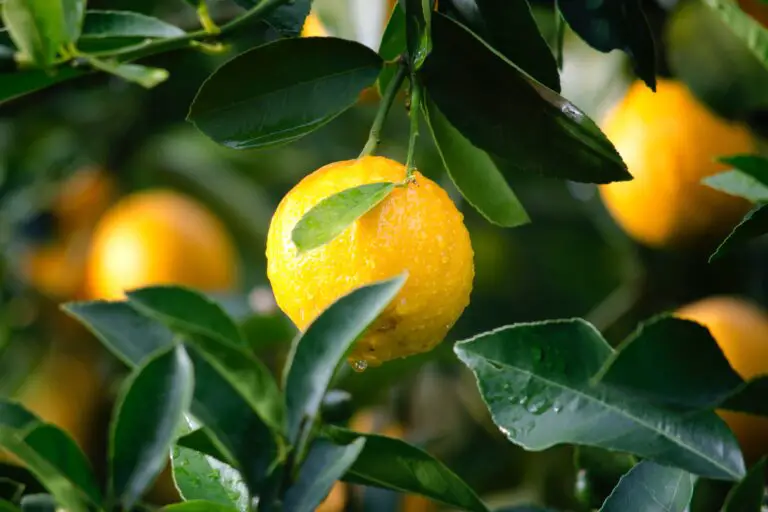
Dealing with Pests and Diseases
When it comes to keeping your Lemon Coral Sedum thriving, it’s not just about the sunshine and water – you’ve got to play defense against uninvited guests, too! Let’s dive into the world of pests and diseases that might try to crash the party and how to deal with these troublemakers.
Spotting the Culprits
Imagine a perfectly sunny day, you’re admiring your vibrant collection of Lemon Coral Sedum when you notice something off. A few leaves look nibbled on, and there’s a strange stickiness to them. Chances are, you’re looking at the handiwork of aphids or mealybugs. These tiny terrors love to feast on succulents, leaving behind a telltale trail of damage and their sticky calling card known as honeydew. It’s not a sweet situation!
But it’s not just insects; watch out for fungal issues like root rot. Say you got a bit carried away with the watering can – it happens to the best of us. If your sedum’s roots are more soaked than a sponge in a rainstorm, they might be in trouble. Fungus thrives in wet conditions, and root rot can quickly turn your succulent sanctuary into a sad story.
Fortifying Your Garden’s Defenses
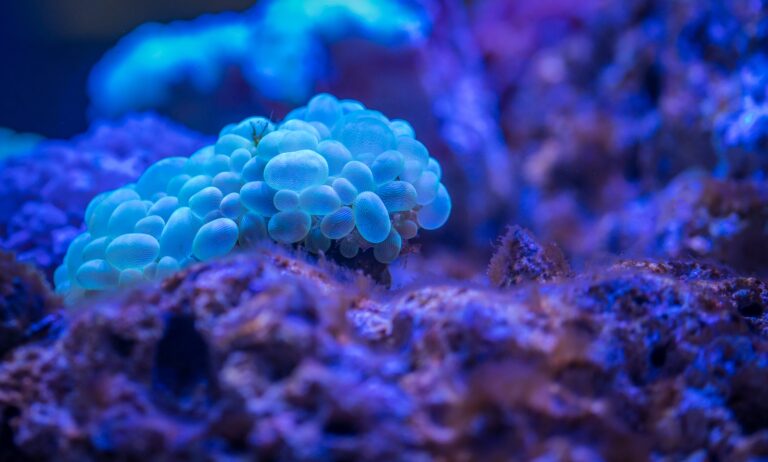
The first line of defense is keeping a keen eye out. Regular inspections can stop pests and diseases before they spiral out of control. If mealybugs dare show their fuzzy faces, give them a taste of their own medicine with some neem oil or insecticidal soap. As for those sap-sucking aphids, a strong blast from your hose or a concoction of water and dish soap will send them packing.
Prevention is vital, too. Ensuring your Lemon Coral Sedum has proper drainage will make it less inviting for root-rot-inducing fungi. Think of it like building a moat around your castle – except it’s a succulent castle, and the moat is well-draining soil. Also, if there’s a particularly rainy season on the horizon, consider some temporary cover to protect your succulents from getting oversaturated.
Turning the Tables
Sometimes, despite our best efforts, nature finds a way, and you might be dealing with a full-blown infestation or a sick plant on your hands. But that’s just the signal to turn up the heat on your pest-fighting tactics. Enlisting the help of beneficial insects like ladybugs or lacewings to patrol your plants can be like hiring your own personal garden bouncers.
When dealing with diseases like root rot, it’s time to play doctor. Trim away the affected parts, hold back on the water, and consider repotting your plant into fresh, sterile soil. It’s like an extreme makeover for your Lemon Coral Sedum, but with a focus on health and resilience.
Remember, You’re Not Alone
No matter what pest or disease tries to invade your Lemon Coral Sedum space, remember that there’s a whole community of fellow garden warriors out there. Sharing stories and tips can not only help you tackle the problem at hand but also connect you with others who have been in your gardening boots. Because at the end of the day, we’re all in this garden together!
Propagating Lemon Coral Sedum
Imagine being able to clone your favorite plant. With Lemon Coral Sedum, it’s almost that easy! This vibrant succulent is not just a delight to the eyes but also a breeze to propagate. Whether you’re aiming to multiply the sea of zesty green in your garden or planning to pass on the joy to friends, propagating this succulent is a rewarding experience. Let’s dive into the simple steps that can help you grow your Lemon Coral Sedum collection.
Starting with Cuttings
One of the most effective ways to propagate Lemon Coral Sedum is by taking stem cuttings. This method truly shows nature’s resilience. All you need is a healthy stem about 2 to 4 inches in length. Snip it right above a leaf node, and you’re in business! To ensure success, let the cut end callous over for a day or two to prevent rot when planting. Once that’s done, plant the stem in well-draining soil, and with the right amount of sunlight and minimal watering, roots will soon take hold.
Leaf Propagation: The Patient Gardener’s Game
For those who enjoy watching the full circle of plant life, propagating Lemon Coral Sedum from leaves might be your cup of tea. Gently twist off a healthy leaf and place it on top of soil. Given time, a new tiny succulent will emerge at the base of the leaf, pushing the boundaries of plant growth. This method requires patience, as it can take weeks, but the reward of seeing new life sprout from a single leaf is unparalleled.
Division: Multiplying Your Succulents
When your Lemon Coral Sedum has grown into a substantial clump, it might be time for some division. This technique is straightforward—simply lift the clump, and with a clean and sharp tool, divide it into smaller sections, ensuring each has a good root system attached. It’s like making a clean break in a relationship, except here, everyone benefits. Replant these divisions, and they’ll continue to grow as independent plants, echoing the untamed spirit of propagation.
Remember, the key to propagating Lemon Coral Sedum is to ensure the cuttings or leaves have ample time to develop roots. The wait is part of the magic—you’re not just growing plants; you’re cultivating patience and care. And as each new shoot sprouts, you’re reminded that with a little know-how and a lot of love, nature can do wonders.
Design Ideas Incorporating Lemon Coral Sedum
Breathe new life into your green spaces by embracing the enchanting Lemon Coral Sedum. This vibrant succulent is more than just a plant; it’s a stroke of design genius waiting to elevate your garden’s aesthetic. Let’s dive into some innovative ways to infuse this gem into your outdoor sanctuaries!
Container Combos That Pop
Imagine a tableau of texture and color that captivates at first glance. That’s exactly what Lemon Coral Sedum brings to container gardens. Paired with deep purples or bold blues, this succulent’s bright hue creates a contrast that’s nothing short of spectacular. For a visual treat, combine it with silver-leafed plants or those sporting dark, moody tones to make its lime-green foliage stand out even more.
Landscaping With a Twist
Who said groundcovers need to be dull? Swap out the traditional and let Lemon Coral Sedum work its magic. Edge your pathways or define garden beds with this low-growing dynamo for an unexpected pop of color. It’s not just about looks either; this hardy succulent can handle foot traffic, making it a practical yet stylish choice for those high-stepped areas in your outdoor oasis.
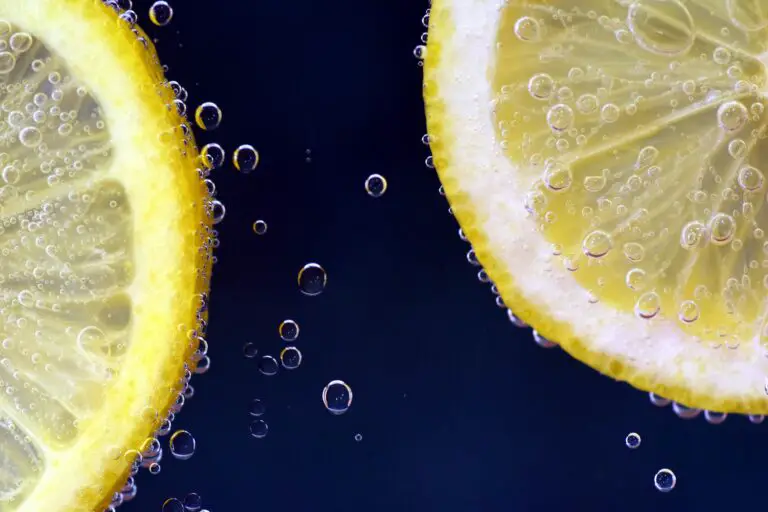
Vertical Gardens and Living Walls
Vertical gardens are the rage, and incorporating Lemon Coral Sedum can transform these structures into living art. Use this succulent to create patterns or ‘paint’ with plants by organizing them in bold, artistic designs. As it spills gracefully over the edges, Lemon Coral Sedum adds a touch of whimsy and movement to your vertical endeavors.
Accenting Architectural Features
Do you have a modern, geometric-shaped planter or a sleek water feature in your landscape? Use Lemon Coral Sedum to soften these hard lines with its frothy texture. When paired with contemporary elements, this succulent gently melds the organic with the structural, bridging the gap between nature and design with its cascading tendrils.
Adding Flair to Rock Gardens
Rock gardens are a symphony of texture, and Lemon Coral Sedum is the perfect accompaniment. Nestle this succulent between stones to add a bright splash among the grays and browns. Its drought tolerance and ability to thrive in well-draining conditions make it a natural fit for rocky landscapes, elevating them with lush, vibrant strokes.
Weave this zesty succulent through your outdoor tapestry, and you’ll find that Lemon Coral Sedum isn’t merely a plant—it’s a living, breathing highlighter for your garden’s most charming narratives.
Conservation and Environmental Impact
When you plant Lemon Coral Sedum in your garden, you’re doing more than just adding a splash of vibrant color to your landscape; you’re making a positive impact on the environment. Let’s dig into the ecological benefits that this hardy succulent brings to the table, or rather, to the soil.
For starters, Lemon Coral Sedum is like a magnet for pollinators. Imagine standing in your garden and watching bees, butterflies, and other beneficial insects buzzing happily from flower to flower. These creatures are vital for a healthy ecosystem, and by providing them with a source of nectar, you’re supporting their populations. It’s a botanical bash, and Lemon Coral Sedum’s bright yellow blooms are the life of the party!
But the perks don’t end with pollinator parties. This plant is a champion of drought resistance. Picture a sweltering summer day, the sun beating down, and your garden turning into a dry, wilted mess. Not the Lemon Coral Sedum! It stands tall and green, unfazed by the heat. This succulent has evolved to store water in its leaves, making it a superb survivor during dry spells. That means you can save water and reduce your environmental footprint while keeping your garden looking lush.
By planting Lemon Coral Sedum, you’re also engaging in a form of water-wise gardening. In areas facing water restrictions or drought conditions, this plant is an ideal choice for a sustainable landscape. It thrives with minimal watering, promoting soil conservation and helping to prevent erosion. Where other plants might fail, Lemon Coral Sedum offers a verdant solution to keep your garden soil stable and fertile.
Let’s not forget that this succulent isn’t just tough—it’s also a low-maintenance ally in the fight against climate change. With its minimal water requirements and robust nature, Lemon Coral Sedum reduces the need for chemical fertilizers and pesticides. It happily coexists with local flora, encouraging biodiversity and providing a mini refuge for wildlife in your own backyard.
Watch and Learn: Lemon Coral Sedum in Action
Still not convinced about the eco-friendly prowess of this succulent? Check out this engaging video that delves into the positive environmental impact of plants like Lemon Coral Sedum:
In summary, planting Lemon Coral Sedum is more than just a green thumb endeavor—it’s a green deed for our planet. With each succulent you tuck into the earth, you’re supporting a world where nature thrives in vibrant, sustainable harmony. So, as you admire the lemony hues of your garden, take pride in knowing that you’re contributing to conservation efforts and bolstering our environment, one sedum at a time!
Lemon Coral Sedum: Brightening Gardens with Vibrant Succulents
Frequently Asked Questions
When it comes to perking up your garden palette, lemon coral sedum (Sedum mexicanum ‘Lemon Coral’) is a go-to choice for gardeners. Its zesty lime-green foliage serves as a vivid groundcover, adding texture and contrast. But with its lush looks comes questions on care and companionship. Let’s dive into the most common enigmas surrounding this succulent superstar.

How Long Does Lemon Coral Sedum Live?
Life’s not always a long summer for the lemon coral sedum. It’s a perennial in USDA zones 7-11, meaning it delights for more than just one growing season. In colder zones, though, it’s often treated as an annual. But don’t despair if you’re in a frosty region; with the right TLC—a snug winter home indoors, for example—this charmer can beat the odds and greet you year after year.
Is Lemon Coral Sedum Winter-Proof?
Snow might be mesmerizing, but for our delicate lemon coral, it’s a tough gig. In zones where the mercury dips below freezing, this succulent needs to escape the chill. Overwintering indoors is like a spa retreat for this plant. Think bright light and minimal water—a cozy setup that promises a grand entrance come spring.
Can Lemon Coral Sedum Become Invasive?
With great growth comes great responsibility. In the right conditions, lemon coral sedum has a zest for spreading. This isn’t always a sour note, though. It fills in spaces with its effervescent charm—just keep an eye on its boundaries, and it won’t step on any garden neighbors’ toes.
Are There Any Plants That Don’t Get Along with Lemon Coral Sedum?
Garden harmony is much like a well-composed melody, and lemon coral sedum is the upbeat rhythm in the garden symphony. It plays well with others, especially those that share its love for the limelight and sunny spots. Think drought-tolerant buddies and contrasting textures. Just avoid water-loving plants—they’re the equivalent of a raincloud on a succulent’s sunny day.
Whether it’s solving the cold-weather puzzle or finding the perfect plant partners, delving into the life of lemon coral sedum is like peeling away layers of a vibrant story. Its resilience and compatibility make it a captivating subject for gardeners seeking a pop of perpetual green.

